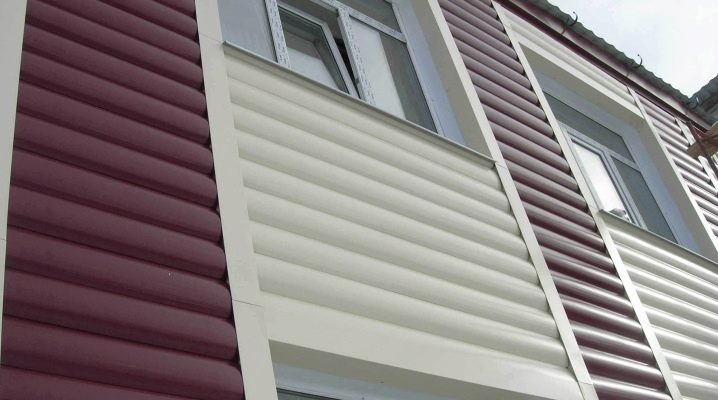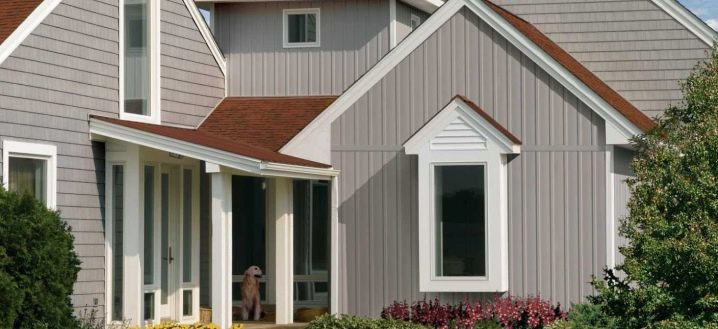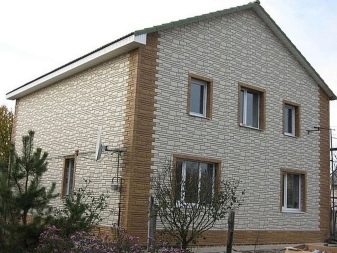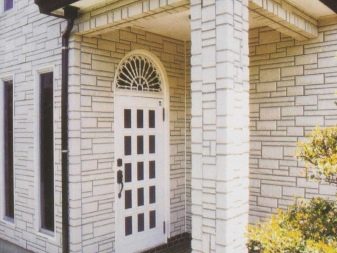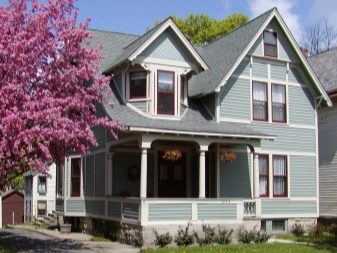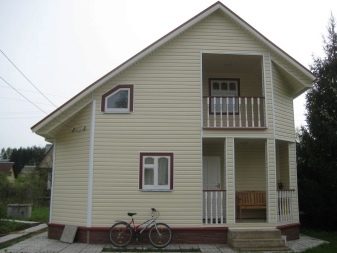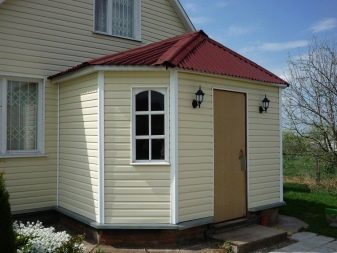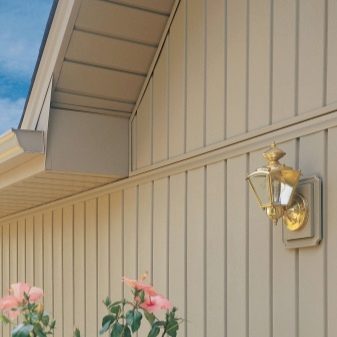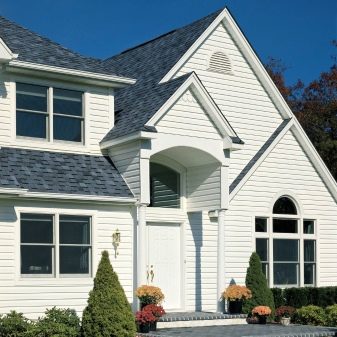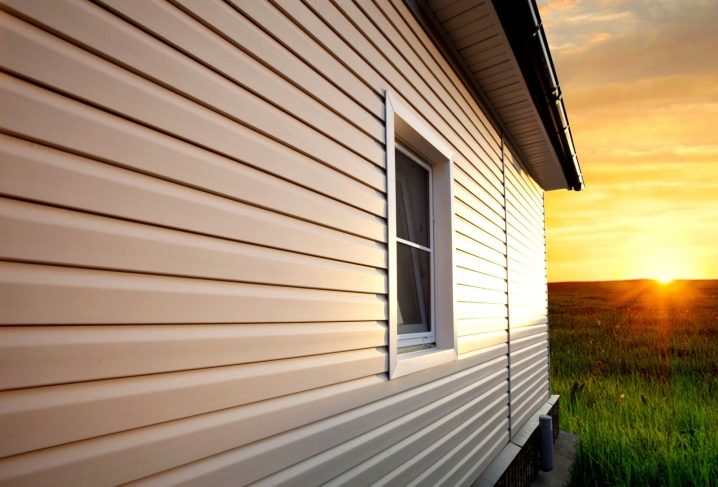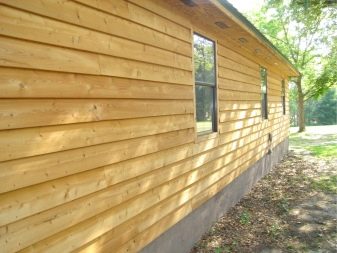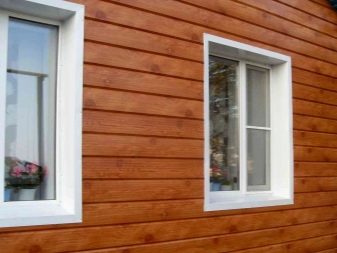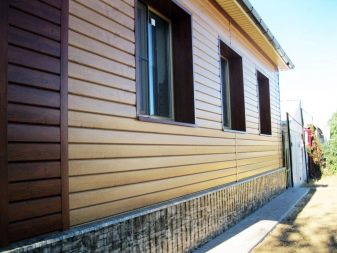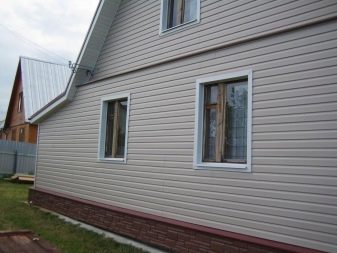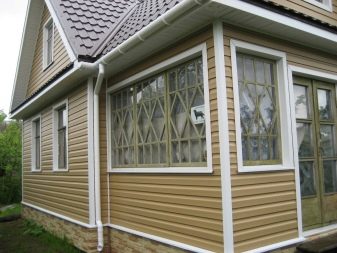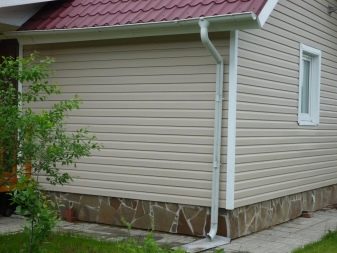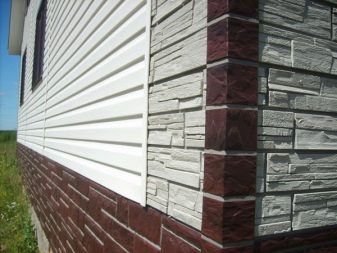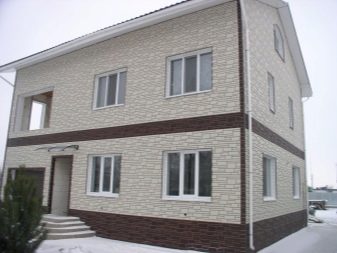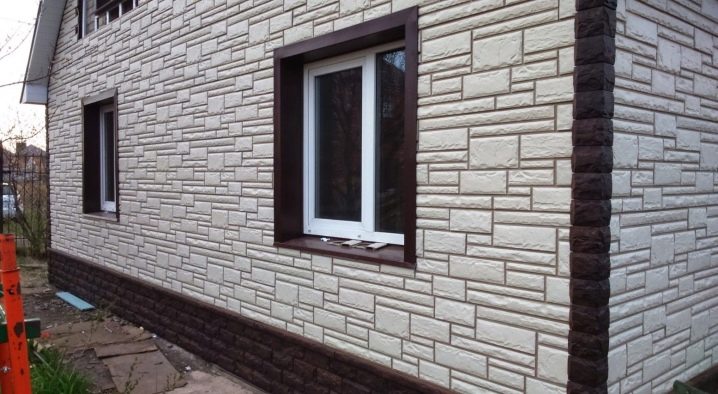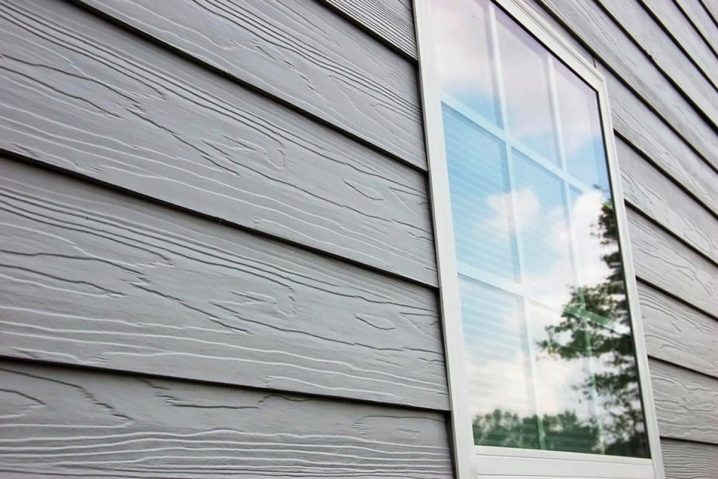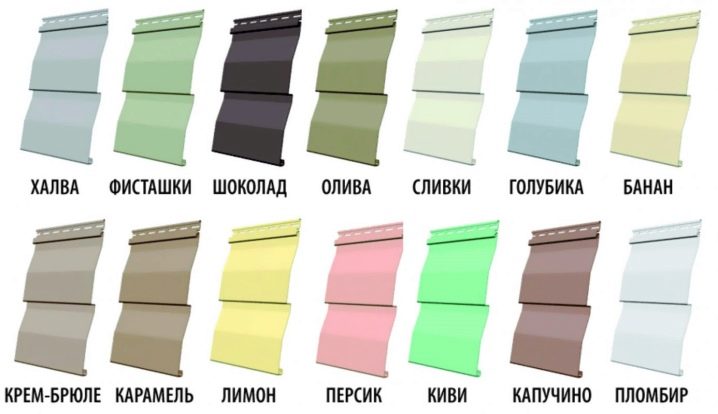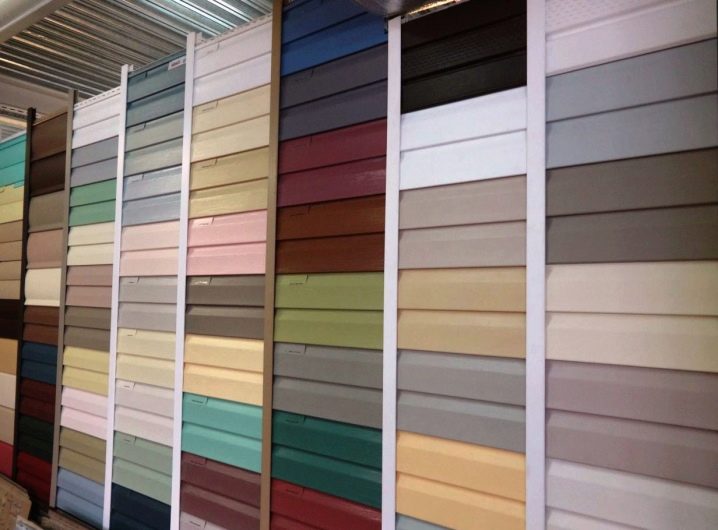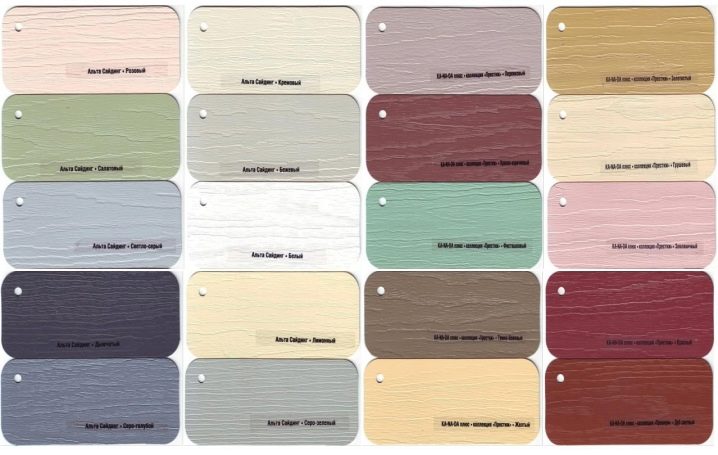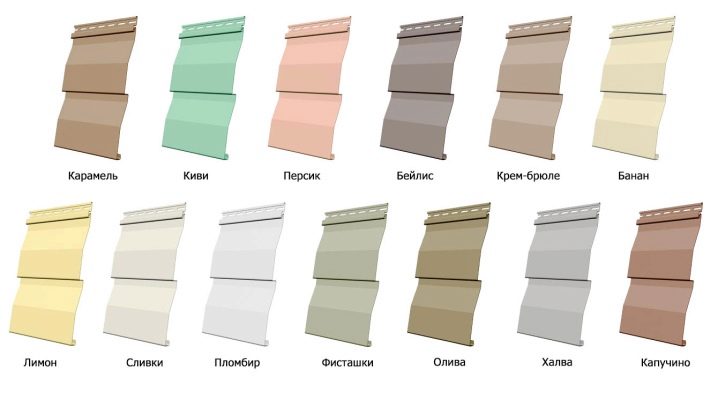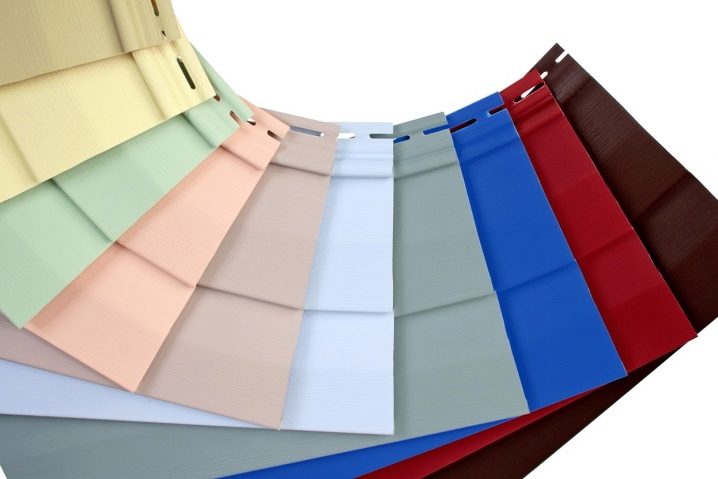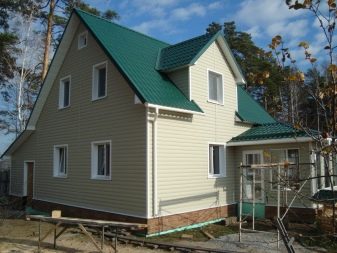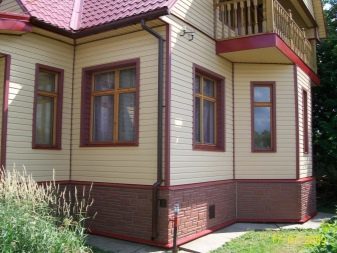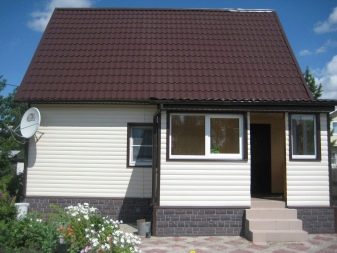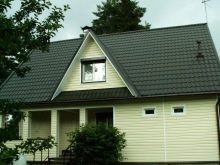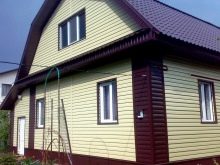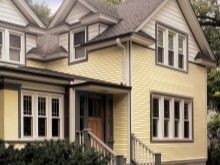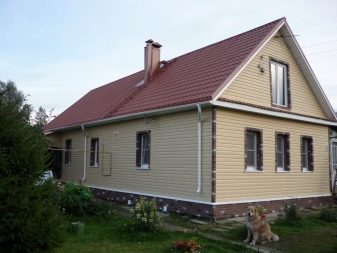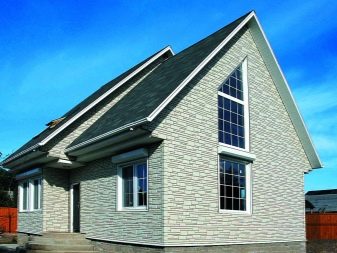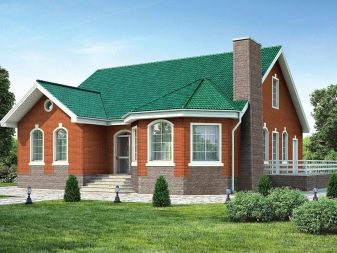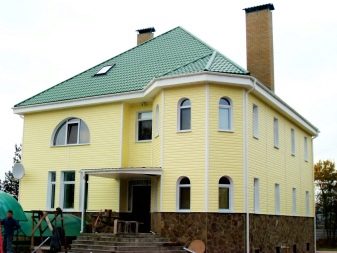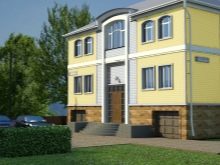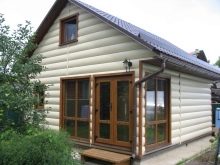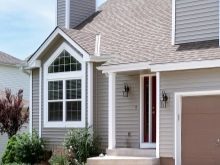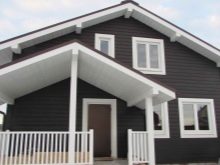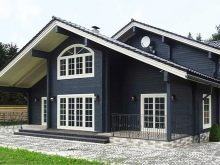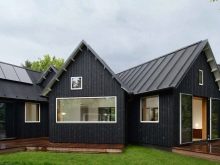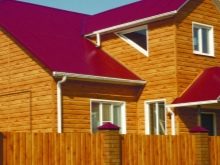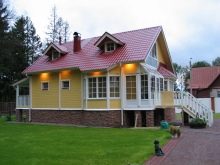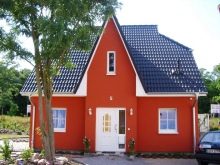Siding: what color is it?
The times when all private houses and cottages were the same as “from a casket” have long passed. Nowadays, facades are distinguished by a noticeable variety of geometric shapes, textures and shades. A wide range of finishing materials offered makes it possible to realize the most non-standard and original solutions when finishing your home, to give it a more stylish, bright and aesthetic look.
The maximum space of fantasy in this regard gives the siding, one of the highest quality types of finishes with a large selection of textures and shades.
Special features
Now for the production of building materials using a variety of raw materials, ranging from stone and metal and ending with waste products. In this regard, siding can please - the panels are made of a variety of materials, so everyone can find a modification to your taste and wallet.
Siding is a modern, high-quality material commonly used for covering private houses, villas and other buildings. The main function of the panels is to protect the facades from the effects of adverse weather conditions (humidity, temperature, wind, ultraviolet radiation).
There are several main types of siding: metal, wood and vinyl.
Metal siding
The panels are made of cold-rolled galvanized steel, used as a coating of pural or polyester. Thickness starts from 1 mm, and width - from 55 cm.
Surfaces can be smooth or figured. Smooth panels are in high demand in recent years, this is due to the ease of installation of plates in any position - both horizontal and vertical.
Metal siding has extremely high consumer characteristics:
- hygroscopic - resistant to moisture;
- does not change its physico-technical properties under conditions of temperature drops, its functionality remains unchanged at t from -50 to +80 degrees Celsius;
- does not ignite, protects walls from fire;
- wear-resistant, resistant to mechanical shock and damage;
- rodents cannot spoil this material, the mold does not form in it, and the fungus does not reproduce;
- panels are easy to install and operate;
- it is made of environmentally friendly raw materials, does not emit harmful and toxic substances, does not contain radiation;
- has a long service life of more than 50 years.
The product is widely used in the construction of new buildings and the restoration of old buildings. It is equally popular in private housing construction, in lining of commercial and public buildings.
Wood siding
This type of siding is also called Canadian. Its undoubted advantages include environmental friendliness - the panels are made from natural wood of high quality, however, the cost of such materials, respectively, is quite high. The raw material for the production of plates is pressed wood mixed with special polymer components. Additives protect the tree from external factors, give it additional resistance to moisture and temperature changes, make the panels durable and highlight the natural beauty of the texture.
The main characteristics of wooden siding:
- plates differ in moisture resistance;
- the material is not subject to damage by insects and parasites, as well as mice and rats;
- exhibits excellent flame retardant qualities;
- have a lower thermal conductivity, thereby retains and retains heat indoors;
- allows the facade to "breathe", that is, it does not interfere with air circulation.
The disadvantages include:
- laborious installation of panels;
- the need for constant treatment and cleaning as pollution;
- the material does not tolerate chlorine, acid-base solutions and other means used to clean surfaces;
- service life does not exceed 25 years.
Vinyl siding
Vinyl siding is commonly used for interior decoration and exterior cladding of residential buildings, industrial buildings and commercial and office premises. We can safely say that this material is the undisputed sales leader in its segment.
The reasons for this popularity are due solely to the consumer properties of siding:
- low price;
- esthetic appearance;
- variety of textures and shades;
- simplicity of fixture;
- high thermal insulation;
- ease of care and cleaning;
- environmental Safety;
- long term of use - up to 40 years.
Some manufacturers have established the release of siding from other materials, however, they are less popular among consumers. On sale is ceramic and fiber cement siding.
Ceramic siding made from clay with the addition of special binders. The advantages of the material include its fire resistance and harmlessness, as well as a variety of textures that imitate brick and wood. Decrease in demand for models is associated with the advent of cheaper analogues on the market.
Fiber cement siding is distinguished by high strength, wear resistance and practicality. However, the plates have considerable weight, which not every structure can withstand. And the price for fiber cement is much higher than for products made from other materials.
Depending on the placement of the panels, there are also vertical, horizontal and basement siding.
There are no functional differences between horizontal and vertical plates - they are made from the same material and are characterized by similar physicochemical properties.
They have differences that have a significant impact on the installation of the structure.
- Different plate configurations. Installation of vertical models in the horizontal direction is possible, but there is a possibility of water getting between the facade and the siding.
- Vertical plates are not equipped with a special perforation providing condensate drain, and in horizontal plates such perforations are present at the bottom of each panel.
That is why the Russian consumer often gives preference to horizontal types of siding, although in terms of mounting the vertical is more convenient and easier.
Socle siding is a panel made by the method of casting, they visually imitate natural stone.
The basic raw material can be any, but there are several active components in the composition, which determine the operating parameters of the siding:
- titanium dioxide - protects against burnout under the influence of UV rays;
- modifiers - to increase strength;
- plasticizer - contributes to the plasticity of the coating
- high quality resins.
The basement panels do not require special treatment before installation - they are easy to clean and durable.
Colors
Choosing a color suitable for facade cladding is quite a difficult task, this is due to the large range of panel material presented on the shelves of building hypermarkets. The main colors of siding 25: white, brown, white, yellow, red, beige, green, golden oak and stained, blue, black, blue and others.
The most popular shades of beige and smoky colors, a little behind them white, green and lemon tones. Not uncommon - facades, lined with light green panels.
Pastel colors, as a rule, are preferred in the design of cottages and country houses.Such panels are much cheaper than their color counterparts. In the elite housing construction materials are used in saturated colors that do not fade over time - they are an order of magnitude more durable.
The color palette is directly related to the material from which the panels are made.
For example, the basement material imitates wood and natural stone, it most often has neutral tones of gray and brown. If the panel reproduces the texture of natural sandstone, the siding will be of amber or bronze color.Option ivory color.
The palette of tones of metal and vinyl siding is much wider - these products are presented in all the variety of colors and shades, from soft pastels to bright and saturated.
What shade to choose is a matter of taste and personal wishes of the property owner.
Designers give some general tips that should not be neglected:
- Light-colored siding visually increases the size of the building, so it is optimal for homes with a small area;
- if shrubs grow close to houses, also give preference to light shades of white, cream or sand. These shades look great with foliage and flowering branches;
- dark color plates make the structure less noticeable, give a strict look and visually reduce its dimensions;
- You should not use dark green or brown colors when there are trees near the house, the construction will be lost on their background;
- shades of gray and blue tones, as well as brick-red give the facade a gloomy look, so designers recommend combining them with light elements - curtain rods, trims and corners;
- dark shades are optimal for accents;
- colored panels will give newness and freshness to the veneer, such houses attract attention, but they do not recommend using more than one bright shade in the facades;
- in buildings with complex architecture, it is worth resorting to panels of a single color, and making all kinds of protrusions and corners white — this simple technique will level the massiveness of the building, make it as airy and elegant as possible;
- it is better to revet a simple plain-shaped house with multi-colored panels, they will give the building a spectacular and stylish look, emphasize the good taste of their owners;
- Classic-style buildings require pastel shades of a warm or cold color palette; white will also look good;
- country houses or country-style buildings will be harmonious if they are tiled with panels imitating the color and texture of wood or natural stone;
- but for a building in a modern or high-tech style, rich shades of lime, magenta, red and emerald green are combined with white or beige.
Color combination
Experts recommend using cladding facades of no more than 2-3 panel colors.The most used combinations are light top + dark bottom, dark top + light bottom and tone-on-tone.
Light tones blend well with complementary dark colors., when choosing a similar design, it is worth putting gray or brown corners and doors, decorating windows and all sorts of spotlights, as well as decorating a terrace, a balcony or a garage attached to the building.
And vice versa: dark plates must be combined with light components.
It is important to make the correct selection of the color of the facade to the shade of the roof.
- If the roof is blue - light models will be optimal for siding, and the choice can be stopped on both warm and cold shades. It will be very stylish if all the decorative elements are also decorated in blue. Keep in mind that the tonality of the blue color on different parts of the facade should be the same;
- Standard brown the roof will be combined with panels of light chocolate, cream and beige. Bold, but stylish look will be lime facing materials, with the purchase of components it is worth staying on the same brown tones;
- Green roof - here you need to pay attention to the panel in white or light gray, and it can be completed with green additional elements.However, components in the shades of the facade will also look good;
- Cherry roof - one of the most "universal" shades. It looks great with a wide variety of colors with the exception of blue, green and turquoise. Brown tone is also not worth using, the building will look gloomy and slovenly;
- Light roof - this option is not common, but is found in practice. The bright colors of siding will be good with him: shades of lemon, peach or kiwi add freshness to the house and fill it with a sense of spring, sun and heat.
Tip: Actually colors and shades may not match. presented in catalogs and brochures of the manufacturer, and the combination of tones may be far from what was expected. To avoid this, it is better to use special programs that will show exactly how the trim of different shades on the facade will look. This will allow you to quickly and easily choose the main color of the material, as well as to choose harmonious additional elements. It is worth paying attention to the fact that these programs will be useful only in cases where traditional veneering is assumed.If the building owner plans to use several shades, then the service is no good. In this situation, it is worth asking for help from a representative of the manufacturer or to get acquainted with the standard table of color compatibility parameters.
Tips and tricks
When buying a siding, think about what impression it will make on guests at home. Choosing a new shade, you can change the feelings that people experience at the sight of the structure.
White color is perceived by people with a positive, it makes a favorable impression and looks advantageous against the background of flowers and plants. However, the panels quickly get dirty, which can significantly impair the appearance.
Gray for most people is a symbol of sadness and light sadness. Therefore, even in the most modern and stylish design can cause mood decay. But if you have decided to decorate the house in graphite shades, make sure that the building stands out from the rest of the courtyards.
Brown tones have always been considered a symbol of modesty. They are optimal for homeowners who prefer a simple style without any frills and originality
Yellow is a joyous color that causes exclusively positive emotions. This makes siding of similar shades popular and in demand. However, do not forget that the color of the facade should be combined with the tone of the roof.
Another point to pay attention to when choosing siding is the ability of a dark color to absorb heat. If the house is standing in the open sun, dark colors require the use of protective coatings. Otherwise, it is impossible to avoid thermal deformations - this will significantly increase the cost of all the work on cladding facades.
Beautiful examples
Look very nice at home, trimmed with light siding.
With the right combination of different shades and combination of panels, dark siding gives the building a stylish and flawless look.
Bright shades bring fresh notes and a feeling of spring all year round to the decor.
About what color siding is, see the next video.
